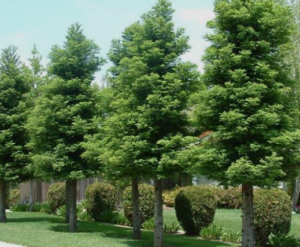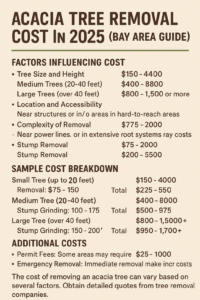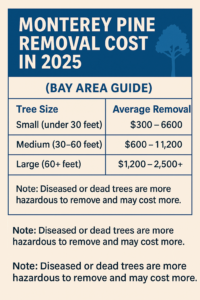Oak trees are among the most majestic and resilient trees in the world, providing shelter and food for wildlife while adding beauty and value to landscapes. With over 600 species of oak trees globally—100 of which grow in the U.S.—identifying the exact species in your yard can be challenging.
Whether you’re wondering how to identify an oak tree or considering planting one, this guide will walk you through the key characteristics of oak trees, the differences between major species, and best care practices to ensure they thrive for generations.
How to Identify an Oak Tree
Oak trees have distinctive features that set them apart from other hardwood trees. Identifying an oak tree involves examining its leaves, bark, acorns, and overall shape. Below, we break down the most reliable characteristics to look for.
1. Oak Tree Leaves: The Best Place to Start

Leaves are often the easiest way to identify an oak tree, and they fall into two primary categories:
- White Oak Leaves: Rounded lobes with smooth edges.
- Red Oak Leaves: Pointed lobes with bristles at the tips.
Additional leaf characteristics:
- Color: Most oak leaves are dark green on top with a lighter underside, though some have reddish or grayish undersides.
- Seasonal Changes: White oak leaves turn red or burgundy in the fall, while red oaks often develop a rusty-brown hue.
2. Oak Tree Bark: Rough, Ridged, and Durable
Oak bark is another strong identification marker, often featuring:
- Deep ridges and furrows
- A hard, scaly texture
- Colors ranging from grayish-brown to dark brown

Oak wood is incredibly durable and has been used for centuries in construction, shipbuilding, and wine barrels due to its strength and resistance to decay.
3. Oak Tree Acorns: The Tree’s Signature Seed
Acorns are the fruit of oak trees, and their appearance can help determine the type of oak:
- White Oak Acorns: Light brown with a short, knobby cap.
- Red Oak Acorns: Darker brown with a longer, scaly cap.

Acorns are a crucial food source for wildlife, including squirrels, deer, and birds.
Types of Oak Trees
There are two primary categories of oak trees in North America: White Oaks and Red Oaks. Below are some of the most common species.
White Oak Trees (Quercus alba)
Leaf Shape: Rounded lobes
Bark: Light gray with deep ridges
Acorn: Light brown with a knobby cap
Common Varieties: Bur oak, swamp white oak, post oak, chinkapin oak
Red Oak Trees (Quercus rubra)
Leaf Shape: Pointed lobes with small bristles
Bark: Darker, with brownish ridges
Acorn: Dark brown with a longer, scaly cap
Common Varieties: Pin oak, willow oak, black oak, northern red oak
Where and How to Plant an Oak Tree
Best Planting Conditions:
- Soil Type: Well-drained, slightly acidic to neutral
- Sunlight: Full sun (at least 6 hours per day)
- Spacing: 40-100 feet apart, depending on species
Growth Expectations:
- White Oaks: 60-100 feet tall, 50-90 feet wide
- Red Oaks: 60-70 feet tall, 40-60 feet wide
- Live Oaks: 40-60 feet tall, 60-100 feet wide
Pruning & Maintenance
- Best Time to Prune: Winter (outside of the active growing cycle)
- Avoid Pruning from April to November (to prevent oak wilt disease)
Common Oak Tree Diseases and Threats
Even the strongest trees can suffer from diseases, pests, and environmental stressors. Here are some common threats:
1. Oak Decline
- Symptoms: Crown dieback, starting from the outer limbs inward
- Cause: Soil compaction, pests, or root damage
- Solution: Proper pruning, soil aeration, and disease monitoring
2. Oak Wilt (A Deadly Fungus)
- Symptoms: Wilting leaves, premature leaf drop, and tree decline
- Cause: Fungus blocking water flow in the tree
- Solution: Immediate diagnosis by a certified arborist
3. Oakworms (Caterpillars That Feed on Leaves)
- Symptoms: Large groups of caterpillars consuming new spring leaves
- Solution: Early intervention with organic pest control or insecticides
4. Oak Leaf Blisters & Galls
- Symptoms: Raised spots or abnormal growths on leaves
- Cause: Fungal infection or insect infestations
- Solution: Regular monitoring and proper tree care practices
Keep Your Oak Trees Thriving
Whether you already have an oak tree on your property or you’re thinking about planting one, understanding how to identify and care for these magnificent trees is key to their long-term health.
- Look at the leaves and bark for quick identification
- Choose the right species for your landscape
- Follow best practices for pruning and maintenance
- Watch out for common diseases and pests
For expert oak tree care and maintenance, consider working with a certified arborist to ensure your trees remain strong and healthy for generations to come.

Need Help Managing Your Oak Trees?
At Fire Fighter Tree Services, we specialize in:
- Tree Identification & Health Assessments
- Professional Oak Tree Pruning & Trimming
- Disease & Pest Control for Oak Trees
Call us today to schedule a consultation with one of our certified arborists.






